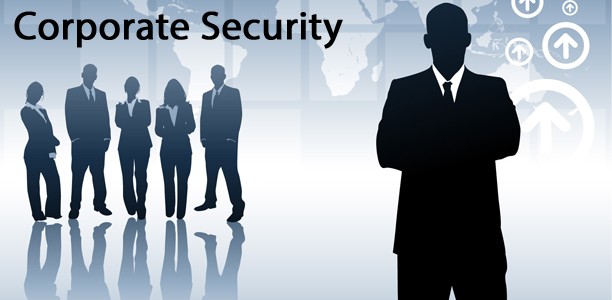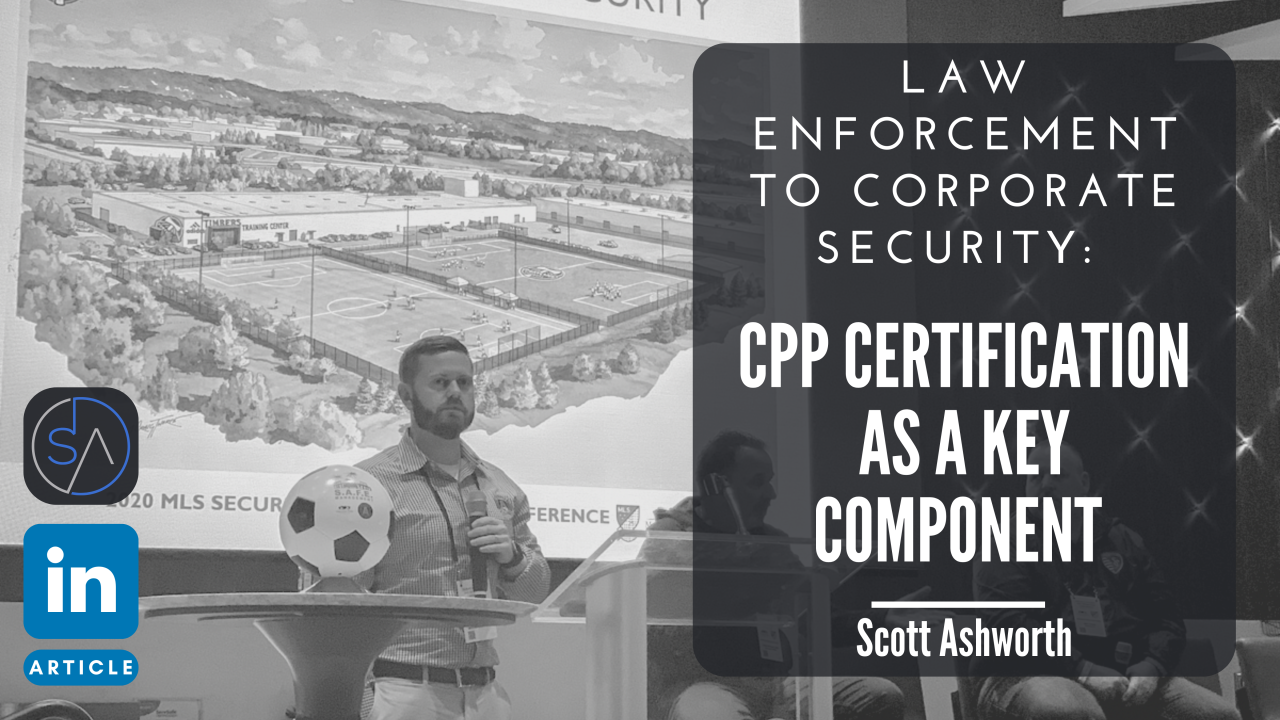Boost Corporate Security: Strategies for a Robust Protection
Wiki Article
From Cybersecurity to Physical Steps: Enhancing Corporate Security in an Altering Globe
By combining the toughness of both cybersecurity and physical safety, companies can create a thorough protection method that attends to the varied array of hazards they deal with. In this discussion, we will check out the transforming threat landscape, the demand to incorporate cybersecurity and physical safety, the execution of multi-factor authentication actions, the significance of staff member awareness and training, and the adjustment of safety measures for remote labor forces. By checking out these key locations, we will certainly get valuable insights right into how companies can reinforce their corporate safety in an ever-changing globe.Understanding the Altering Threat Landscape
The evolving nature of the contemporary globe demands a comprehensive understanding of the transforming hazard landscape for efficient corporate safety. It is crucial for organizations to stay notified and adjust their protection determines to attend to these developing hazards.One secret aspect of recognizing the altering hazard landscape is acknowledging the various kinds of dangers that organizations face. Cybercriminals are constantly establishing new methods to make use of vulnerabilities in computer system systems and networks. These dangers can range from malware and ransomware assaults to phishing frauds and social engineering methods. In addition, physical risks such as burglary, vandalism, and company reconnaissance remain prevalent worries for services.
Surveillance and analyzing the danger landscape is important in order to identify prospective dangers and vulnerabilities. This entails remaining updated on the most up to date cybersecurity trends, evaluating danger knowledge records, and carrying out normal risk evaluations. By comprehending the changing threat landscape, organizations can proactively carry out proper security measures to reduce risks and protect their properties, reputation, and stakeholders.
Integrating Cybersecurity and Physical Safety And Security
Integrating cybersecurity and physical security is crucial for thorough corporate defense in today's interconnected and electronic landscape. As organizations significantly depend on modern technology and interconnected systems, the borders between physical and cyber hazards are coming to be obscured. To efficiently guard against these risks, a holistic approach that incorporates both cybersecurity and physical safety steps is vital.Cybersecurity concentrates on protecting digital possessions, such as data, systems, and networks, from unauthorized access, disturbance, and theft. Physical safety, on the various other hand, incorporates steps to safeguard physical properties, people, and facilities from hazards and vulnerabilities. By integrating these 2 domain names, companies can resolve susceptabilities and dangers from both digital and physical angles, thereby boosting their total safety and security posture.
The assimilation of these two self-controls enables a much more comprehensive understanding of protection dangers and allows a unified response to incidents. For instance, physical accessibility controls can be enhanced by integrating them with cybersecurity procedures, such as two-factor verification or biometric recognition. Cybersecurity actions can be matched by physical safety and security actions, such as security electronic cameras, alarm systems, and safe and secure gain access to points.

Implementing Multi-Factor Verification Measures
As organizations increasingly focus on extensive safety steps, one efficient strategy is the implementation of multi-factor authentication actions. Multi-factor authentication (MFA) is a protection method that needs users to provide numerous forms of identification to access a system or application. This technique includes an added layer of protection by combining something the individual recognizes, such as a password, with something they have, like a protection or a finger print token.By executing MFA, companies can dramatically improve their security posture - corporate security. Typical password-based verification has its constraints, as passwords can be conveniently endangered or forgotten. MFA mitigates these risks by adding an additional verification variable, making it harder for unauthorized people to access to sensitive information
There are numerous types of multi-factor verification methods available, consisting of biometric verification, SMS-based verification codes, and hardware symbols. Organizations need to analyze their particular needs and pick one of the most go to my site ideal MFA service for their needs.
Nonetheless, the implementation of MFA ought to be carefully planned and executed. It is vital to strike an equilibrium in between safety and security and functionality to prevent customer aggravation and resistance. Organizations should additionally consider possible compatibility concerns and give sufficient training and assistance to make sure a smooth transition.
Enhancing Employee Recognition and Training
To reinforce business protection, organizations should focus on improving employee awareness and training. In today's quickly advancing hazard landscape, employees play an essential function in safeguarding a company's delicate details and possessions. However, several safety and security breaches occur because of human mistake or absence of understanding. Organizations require to spend in comprehensive training programs to inform their staff members about possible risks and the ideal methods for mitigating them.Reliable worker recognition and training programs need to cover a variety of subjects, including data security, phishing strikes, social engineering, password health, and physical safety and security actions. These programs ought to be tailored to the particular needs and duties of various employee duties within the organization. Routine training sessions, simulations, and workshops can aid staff members establish the essential abilities and knowledge to react and identify to safety threats efficiently.
Furthermore, organizations must motivate a culture of safety and security awareness and offer ongoing updates and pointers to keep staff members educated about the most recent risks and mitigation strategies. This can be done through inner interaction networks, such as newsletters, intranet portals, and email projects. By fostering a security-conscious workforce, organizations can substantially lower the probability of safety and security incidents and secure their valuable possessions from unauthorized accessibility or concession.

Adapting Security Steps for Remote Labor Force
Adjusting business security steps to accommodate a remote labor force is essential in making sure the defense of delicate information and assets (corporate security). With the increasing fad of remote job, organizations should carry out suitable safety steps to alleviate the threats associated with this new means of workingOne important element of adapting security measures for remote work is establishing safe interaction channels. Encrypted messaging systems and digital personal networks (VPNs) can assist protect delicate details and protect against unapproved accessibility. In addition, companies must apply using solid passwords and multi-factor authentication to boost the safety of remote gain access to.
One more essential factor to consider is the application of safe remote access options. This involves giving employees with secure accessibility to corporate resources and data with virtual desktop framework (VDI), remote desktop computer protocols (RDP), or cloud-based services. These modern technologies make certain that delicate information continues to be protected while making it possible for workers to execute their roles efficiently.

Last but not least, detailed security get more recognition training is vital for remote staff members. Training sessions must cover ideal methods for securely accessing and handling sensitive information, recognizing and reporting phishing efforts, and keeping the total cybersecurity hygiene.
Final Thought
In verdict, as the hazard landscape proceeds to develop, it is crucial for organizations to strengthen their protection gauges both in the cyber and physical domain names. Integrating cybersecurity and physical protection, carrying out multi-factor authentication procedures, and improving worker awareness and training are important steps towards accomplishing robust business safety and security.In this conversation, we will explore the transforming risk landscape, the demand to integrate cybersecurity and physical safety and security, the application of multi-factor verification steps, the significance of worker understanding and training, and the adjustment of security steps for remote workforces. Cybersecurity measures can be complemented by physical safety procedures, such as surveillance electronic cameras, alarms, and protected access factors.
As organizations significantly prioritize extensive security procedures, one effective strategy is the application of multi-factor verification steps.In verdict, as the hazard landscape proceeds to progress, it is critical for organizations to strengthen their safety determines both in the cyber and physical domains. Incorporating cybersecurity and physical safety and security, implementing multi-factor authentication actions, and improving worker recognition and training are necessary steps in the direction of achieving durable company protection.
Report this wiki page